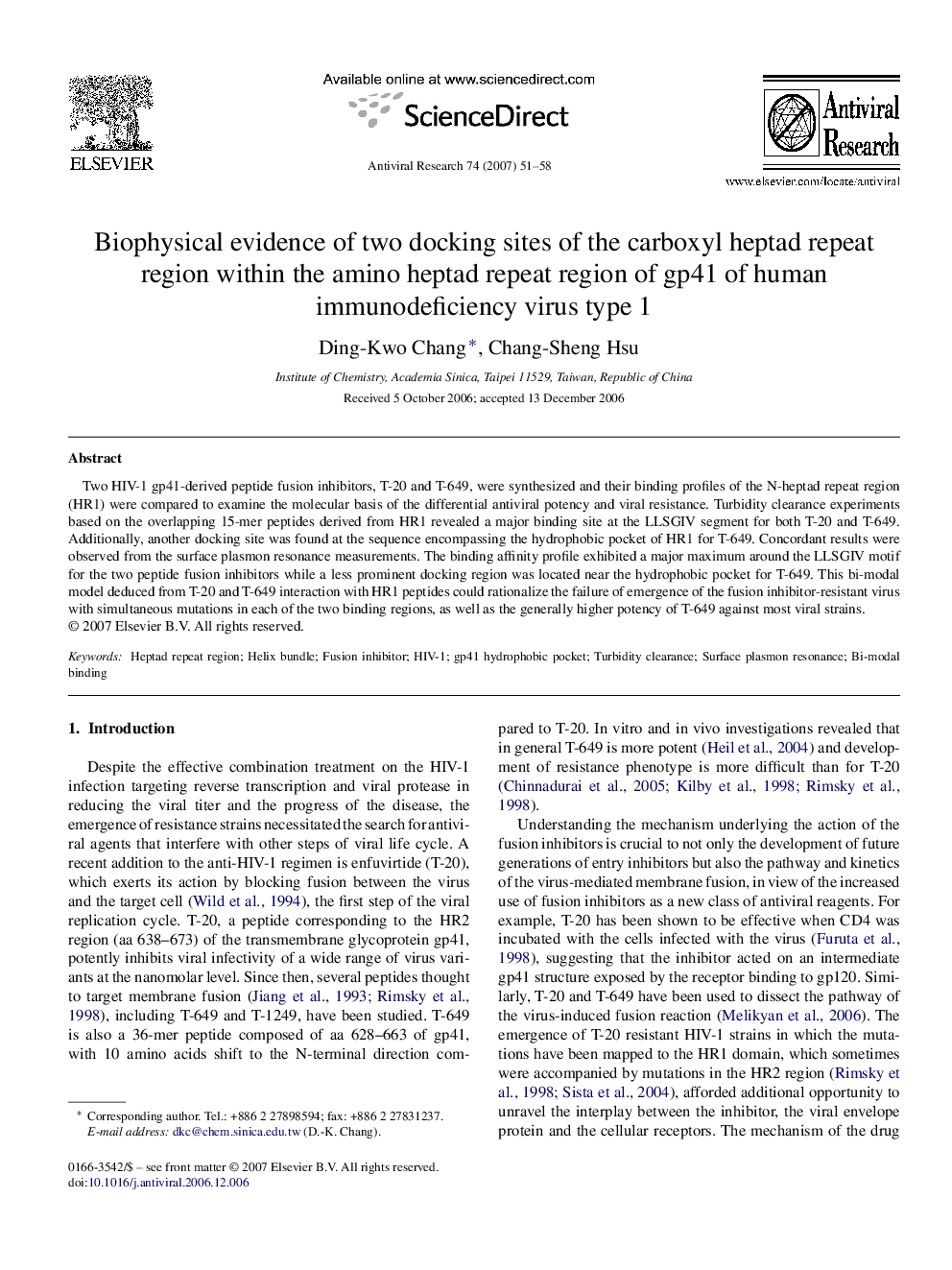| Article ID | Journal | Published Year | Pages | File Type |
|---|---|---|---|---|
| 2511643 | Antiviral Research | 2007 | 8 Pages |
Two HIV-1 gp41-derived peptide fusion inhibitors, T-20 and T-649, were synthesized and their binding profiles of the N-heptad repeat region (HR1) were compared to examine the molecular basis of the differential antiviral potency and viral resistance. Turbidity clearance experiments based on the overlapping 15-mer peptides derived from HR1 revealed a major binding site at the LLSGIV segment for both T-20 and T-649. Additionally, another docking site was found at the sequence encompassing the hydrophobic pocket of HR1 for T-649. Concordant results were observed from the surface plasmon resonance measurements. The binding affinity profile exhibited a major maximum around the LLSGIV motif for the two peptide fusion inhibitors while a less prominent docking region was located near the hydrophobic pocket for T-649. This bi-modal model deduced from T-20 and T-649 interaction with HR1 peptides could rationalize the failure of emergence of the fusion inhibitor-resistant virus with simultaneous mutations in each of the two binding regions, as well as the generally higher potency of T-649 against most viral strains.
